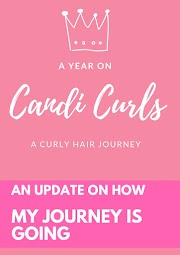Hair Oils: Am i using them right
There are so many hair oils out there. Some we have heard of, some we haven't. Finding the one that works for your hair is part of the journey, but did you know that not all oils are for the same purpose?
Have you ever heard of the LOC/LCO* method? People rave about this method working for them, but if you tried it and it didn't work. Perhaps you were using the wrong oils.
Some oils are for moisture, whereas others are to seal that in instead. If you were using a sealant oil expecting moisture, that's why it didn't work, and vise-versa if you used a sealant and was expecting moisture.
What am i talking about right?
I have read a lot of articles lately in my research on oils, and i am going to try and be as simple in my explaining as i can, but it all comes down to science.
Different oils have different molecular structures, and it's knowing the fatty acid content, that helps determine the penetrative ability of the oil.
If an oil can penetrate the hairs follicles, then they can get moisture in. If not then they will just sit on top of the hair, creating a protective film. The shorter the fatty acid, the bigger the penetrating ability. Where penetrative oils can also leave a protective film on the hair, it is usually soaked in quickly by the cuticles, so it doesn't work the same as a sealant.
Cuticle layers can be damaged by manipulation from styling tools such as brushes, and environmental factors like the weather. Oils can seal the hair and prevent and protect from these factors. They can add shine and lubricate hair making detangling easier.
A sealant oil, will sit on top of the hair and act as a barrier to prevent moisture from escaping, it does however also stop any more moisture from getting in, and so it's important that these oils are used after the hair has been fully moisturised well. Sealant oils are better used during LCO* at the final stage of the styling process or when using heat, for protection
Penetrative oils, or moisturising oils, are best used during the LOC* method, for pre-pooing hair and for hot oil treatments. These type of oil can get to the cortex of hair, which is the thickest part and provides strength, and help reinforce that.
Moisturising oils
The molecular structure of coconut oil, is small enough that it can penetrate the hair follicle better than others. It can interact with proteins and help restore them.
This oil is great for adding softness to your hair as well as strength. It penetrates well and helps retain moisture. By smoothing the hairs outer cuticle, this oil can leave hair shiny.
This is great for restoring damage from heat. It's high in vitamin E which helps with strength and breakage. Like Olive oil it smooths the hair cuticle but is lighter. This means it can be absorbed without weighing hair down. Used best as a pre-poo.
Sealing Oils:
This one most people have heard of and use in their routine or home made hair masks. It is great for growth as it brings out the toxins which prevent it. It's a very thick oil which makes it great for sealing. It also softens hair.
This oil has the strongest resemblance to the natural oils that our hair products. This makes it great for restoring PH and soothing dryness on the scalp.
Another very light oil which can withstand heat well and is great for finer textured hair.
Next time you try out the LOC/LCO* method, make sure that you are using the correct type of oil and see how this works for you.
For me personally the LCO is my method of choice as my hair dries out and want to lock as much moisture in as i can. Others need to add more moisture with oils in the middle of the styling process.
*LOC = Leave-in/liquid, followed by an oil, and then a cream/lotion
**LCO = Leave-in/liquid, followed by a cream/lotion and then sealed with an oil
















0 Comments